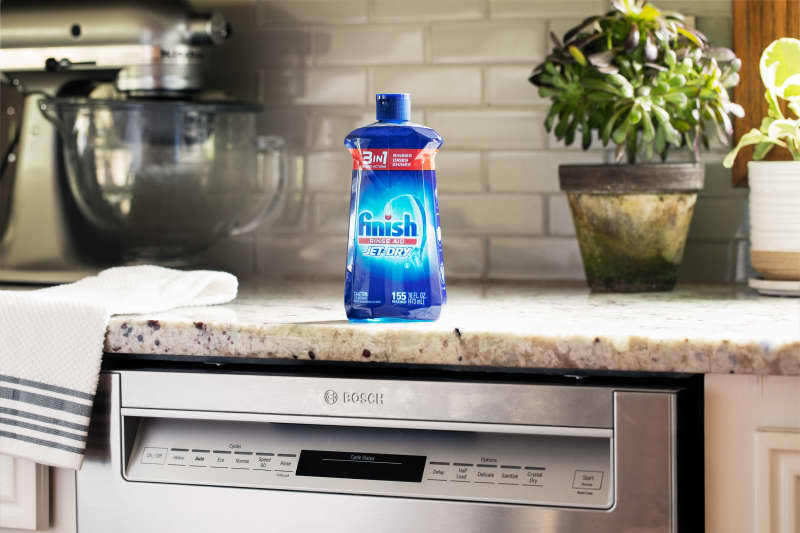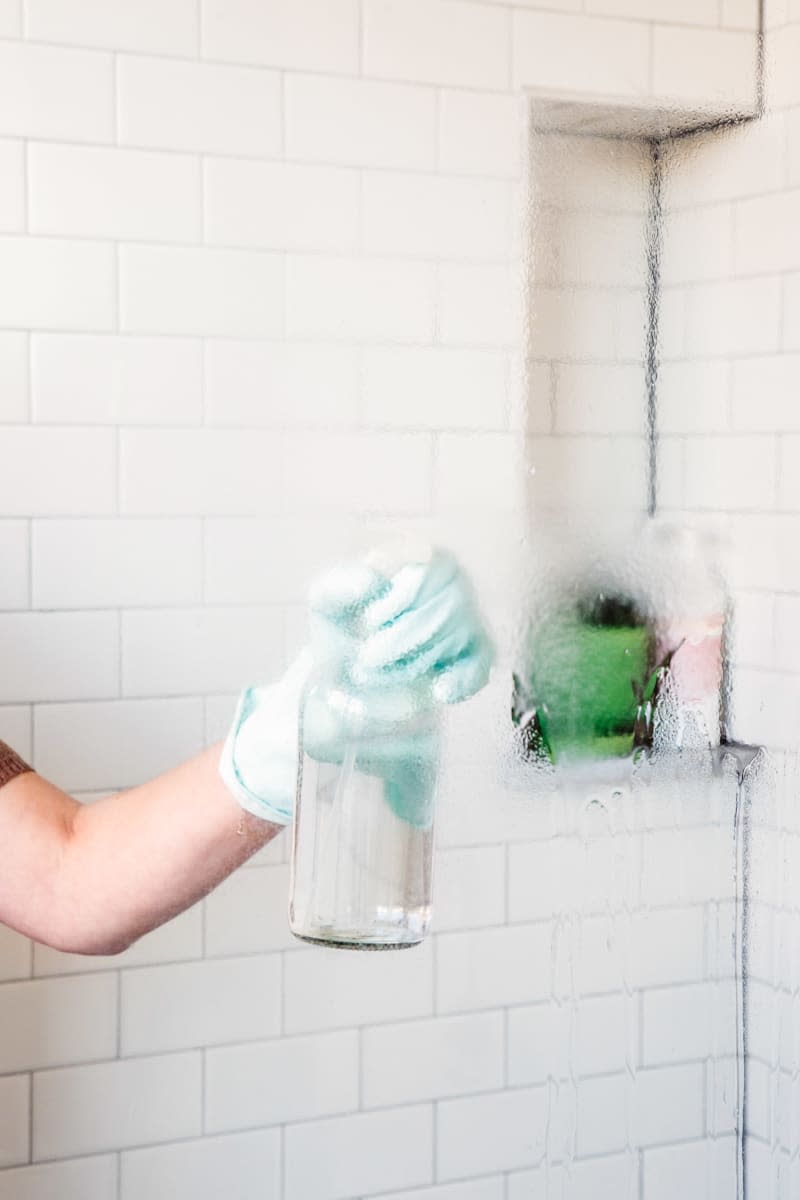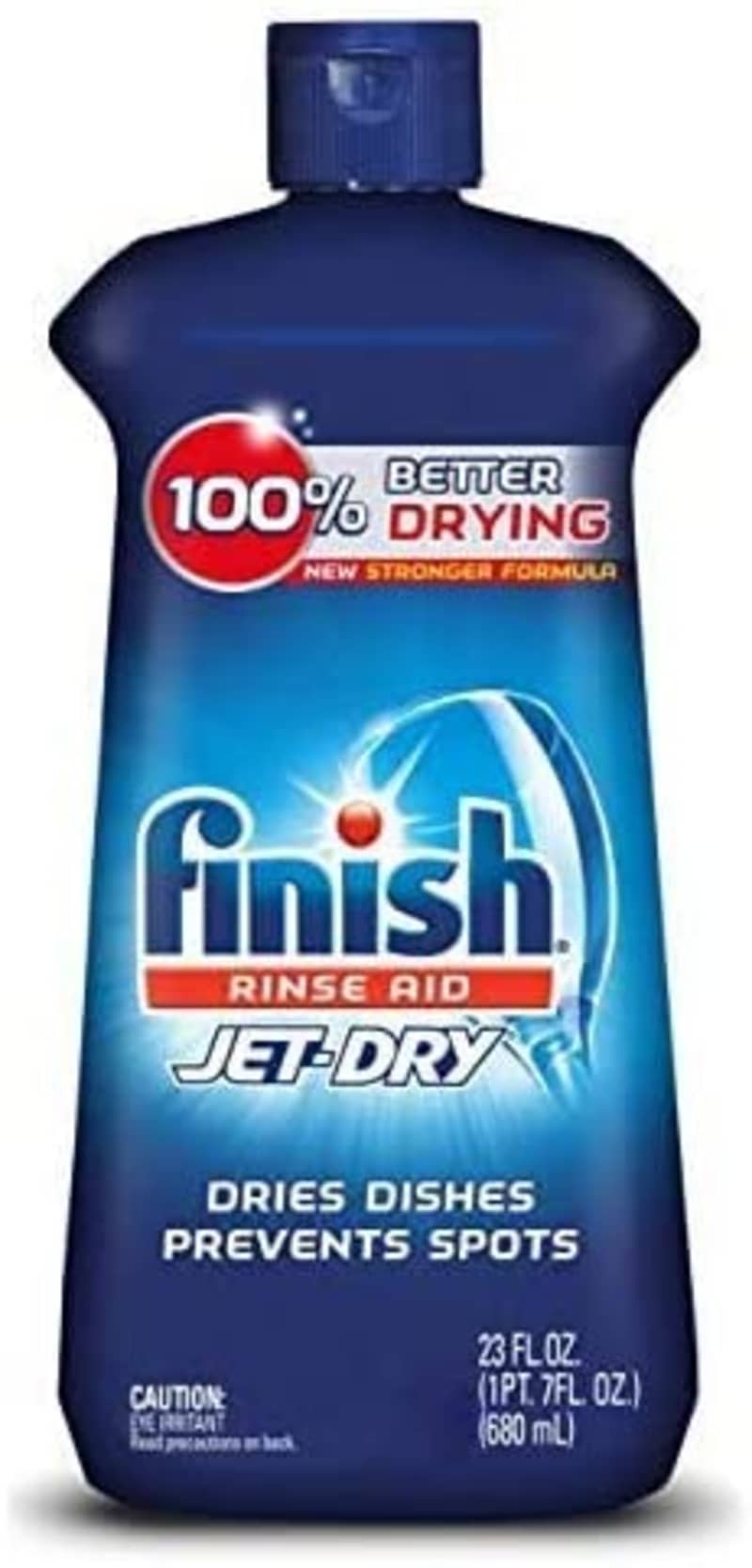I Tried Using Rinse Aid on My Shower Glass and Here’s What Happened

It’s embarrassing to admit, but although I’ve had a bottle of rinse aid in my under-the-sink cabinet forever, I’ve only very recently started using it. Once I found out how it works (by breaking the surface tension of water that’s left on your dishes after they’ve been washed) and seen the results, it’s become part of my dishwashing routine. And I’ve also started to wonder (and write about) what else rinse aid could be used for. For sure, causing water to sheet off a surface had some cleaning applications beyond dishes, I thought.
In particular, I wondered if rinse aid might be useful in cleaning shower glass. My reasoning was as follows: Shower glass undergoes a very similar “experience” as dishes in the dishwasher. It gets doused with water which leaves behind undesirable deposits that make the glass cloudy. In theory, using rinse aid to help this water run off the glass quickly should have the same effect as it does on your drinking glasses, i.e. it should deliver crystal-clear glass.
I decided to test out my hypothesis by making a rinse aid shower spray (loosely following this recipe I found online) — and the results were even better than I expected.

Rinse Aid Is My New Favorite Way to Clean Shower Glass
First, I cleaned my shower doors with the solution. And, let me tell you, that was by far the easiest it has ever been to clean all the soap scum off our shower door glass! I sprayed and hardly waited before I wiped them down with a rag and the glass was perfectly clear.
Next, I purposely sprayed water on the shower doors. It seemed like the water beaded up more quickly than usual, and this makes sense if there was some rinse aid residue left on the surface.
Then, to really put the spray to the test, I sprayed the doors with water and spritzed my shower spray on one side of the door afterwards. I came back about half an hour later to find that there was no water on the part I’d used the shower spray on. The untreated surface, however, still had a bunch of water drops clinging to it. And several hours later, once all the doors were dry, I examined the difference between the part I sprayed and the part I didn’t. The unsprayed part had visible spots where each drop of water lingered. The part I’d sprayed was still perfectly see-through!
My takeaway from this experiment is that using a spray with rinse aid not only makes cleaning shower glass easier, it also helps keep the glass clearer longer.
Finish Jet-Dry Rinse Aid
How to Make & Use Shower Spray with Rinse Aid
To make your own shower spray with rinse aid, mix half a cup each of hydrogen peroxide and isopropyl alcohol, half a teaspoon of dish soap, and a tablespoon of rinse aid in a spray bottle. Fill the rest of the spray bottle with warm water and shake to mix.
Keep the spray bottle right in the shower and take a few seconds to spray down the glass after each shower.
This post was originally published on Apartment Therapy. Read it there: I Tried Using Rinse Aid on My Shower Glass and Here’s What Happened


